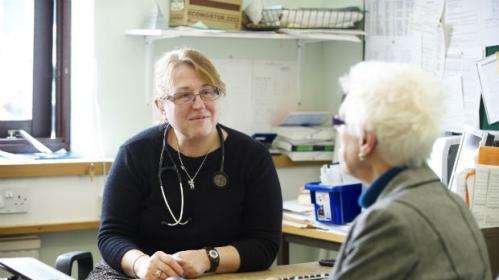New guidance aims to improve cancer diagnosis

The country's health watchdog has issued new draft guidance on how to spot early signs and symptoms of cancer, which it says could save thousands of lives a year.
The National Institute for Health and Care Excellence (NICE) advice is aimed at GPs and health professionals who have to differentiate between over 200 types of cancer, some of which are rare with only a handful of patients visiting their GP with symptoms.
To help doctors identify cancers more quickly, the draft guidance includes a series of tables that clearly set out which symptoms are linked to which cancers. The advice also provides recommendations for the type of follow-up test or service that should be offered.
Professor Mark Baker, NICE's clinical practice director, said: "It is not always easy for GPs to spot cancer either. There are more than 200 different types of the disease so it is unrealistic to expect them to know every single sign and symptom of each one, especially when they only see a handful of new cases a year.
"Research carried out in general practice in recent years gives us better evidence about which signs and symptoms best predict cancer, and all this is captured in our draft updated guidance.
"We are updating our guideline to make things as simple as possible for GPs to consider the possibility of cancer and refer people to the right service at the right time. Early referral and diagnosis can help save lives."
NICE will also update a booklet that provides the public with useful information about certain health conditions. The new advice will help people identify possible signs of cancer earlier and encourage them to visit their GP sooner.
Cancer Research UK's director of early diagnosis, Sara Hiom, said it was encouraging that the new guidelines would speed up diagnoses, but that greater access to tests and improvements on the speed of results is the best way to improve diagnosis rates.
"We're pleased that NICE is updating its guidelines to make it easier for GPs to refer patients with worrying symptoms for further tests," she said.
"This means more cancers should be diagnosed as early as possible when treatment is most likely to be effective.
"We know it's not easy for GPs to deal with symptoms where they have a sense that things aren't right but no procedure to follow to arrange further tests. These guidelines should give them more options to get patients referred quickly.
However, Hiom also highlighted the need for more resources for diagnostic tests, and to improve the time taken to get results back to patients.
The draft update, which will now go to public consultation, also includes advice on how to treat people with symptoms associated with a high risk of developing cancer, but who do not meet the referral criteria. 'Safety netting' aims to ensure that cancer is diagnosed in its early stages.
The guide will also give recommendations on how to support patients with suspected cancer, and their families.
















